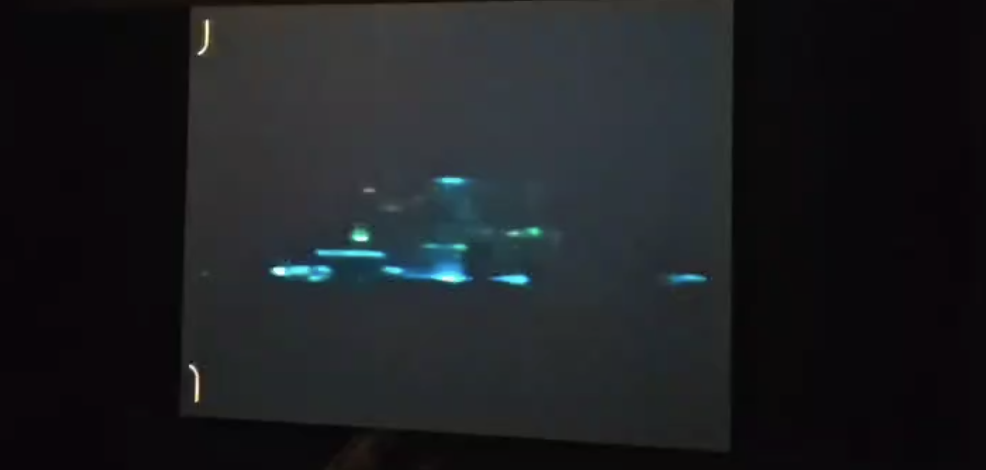Week7 Reflecting on Derek Jarman’s Modern Nature in Glasgow – Exhibition Insights & Curatorial Inspirations

This week, We visited The Hunterian Art Gallery in Glasgow to see the exhibition ,And my favorite is “Digging In Another Time: Derek Jarman’s Modern Nature”. The show focuses on the work of Derek Jarman, a British artist and filmmaker, particularly his experimental art practice at Prospect Cottage in Dungeness.
Exhibition Overview: Jarman’s “Modern Nature”
Derek Jarman was not only a pioneering figure in British avant-garde cinema but also a multidisciplinary artist whose practice spanned film, painting, poetry, gardening, and activism. After being diagnosed with HIV in 1986, he moved to Dungeness, a coastal area in southeast England, where he created Prospect Cottage—a space that became both a site of artistic experimentation and a personal sanctuary in response to illness and social marginalization.
This exhibition presents Jarman’s films, photographs, handwritten notes, and a reimagining of his garden at Prospect Cottage. It explores how he wove together personal experience, ecological concerns, and political awareness, creating a unique visual and conceptual narrative. Beyond a retrospective, the show invites visitors to reflect on themes of nature, time, and belonging.
Key Highlights & Personal Reflections
1. Multi-Media Storytelling: Merging Film, Objects & Text
One of the most striking aspects of the exhibition is its multi-sensory curation. Jarman’s film clips, collected driftwood, dried plants, and handwritten poetry are displayed together, breaking away from conventional exhibition structures. Instead of simply viewing artworks, visitors step into a layered, temporal landscape where different media interact.
A standout for me was the presentation of The Garden (1990). This surreal film weaves together religious iconography and queer identity, addressing societal oppression in deeply poetic ways. The exhibition juxtaposes fragments of the film with Jarman’s handwritten notes, allowing viewers to grasp his creative thought process through the interplay of text, moving images, and physical objects.
This cross-media approach has given me valuable insights for curating exhibitions. How can I create an experience that extends beyond a single medium? How can I construct a layered narrative where visual, textual, and spatial elements interact? These are questions I now wish to explore in my curatorial practice.
2. Art as Resistance: HIV/AIDS & Political Engagement
Jarman’s work is deeply tied to his identity as an openly HIV-positive artist. The exhibition highlights how his films and writings engage with themes of illness, mortality, isolation, and activism.
One of the most powerful works on display is Blue (1993)—a film that consists entirely of a monochrome blue screen while Jarman’s voice narrates his reflections on illness, memory, and death. The absence of imagery forces viewers to engage with sound and imagination, mirroring the disembodiment of sickness and the loss of vision Jarman experienced.
This made me reflect on how contemporary curatorial practices can engage with disease, identity, and social politics. Beyond displaying art, can curation serve as a form of activism? Can exhibitions challenge dominant narratives and create platforms for marginalized voices? Jarman’s work suggests that art and curation can be powerful tools for political engagement and social commentary.
3. Ecological Art & Spatial Storytelling
A highlight of the exhibition was the reconstruction of Jarman’s garden at Prospect Cottage. Rather than a static recreation, the curators used spatial storytelling to evoke the atmosphere of the place—through found objects, video projections, and environmental design.
Jarman’s garden was more than a personal retreat; it was a site of ecological experimentation, blurring the boundaries between art, nature, and activism. The exhibition captures this sense of site-specificity, emphasizing how the landscape shaped Jarman’s artistic vision.
This approach made me rethink exhibition design:
- How can curatorial spaces become immersive environments rather than mere display areas?
- How can we use objects and spatial arrangements to evoke memory, time, and atmosphere?
Curatorial Takeaways: What Can I Apply to My Own Practice?
This exhibition reshaped my understanding of curatorial possibilities, especially in the following ways:
1. Breaking Down Medium-Specific Boundaries
Jarman’s work seamlessly integrates film, sculpture, text, and performance. The exhibition’s multi-layered curation made me realize that contemporary exhibitions should not be confined to single media. In my curatorial practice, I want to explore how digital art, sculpture, moving image, and AI-generated works can interact to create richer experiences.
2. Curating as Worldmaking
Jarman’s artistic and curatorial approach aligns with the concept of “worldmaking”—where exhibitions do not merely showcase artworks but construct entire perceptual environments. The interplay of space, objects, and media in this show suggests that curation can be about building immersive, interactive, and conceptual “worlds”.
I now want to consider how my future exhibitions can:
- Encourage active engagement rather than passive viewing
- Use spatial design and materiality to shape visitor experiences
- Craft a curatorial voice that is not just interpretive but also poetic and political
3. Addressing Socio-Ecological Issues Through Curation
Jarman’s work underscores the relationship between art, ecology, and activism. His approach prompts me to think about:
- How can digital art reflect ecological concerns?
- How can AI-generated imagery contribute to discussions about nature and sustainability?
- How can curation create dialogue around contemporary environmental and social crises?
These questions will be central to my future curatorial research.
Final Thoughts: Exhibition as Inspiration for Future Curating
Digging In Another Time: Derek Jarman’s Modern Nature was more than just an exhibition—it was a curatorial experiment that challenged the conventions of display, storytelling, and spatial design. It deepened my understanding of how curation can go beyond representation to create immersive, multi-layered, and politically engaged experiences.
Going forward, I hope to incorporate these insights into my own practice:
- Expanding beyond traditional mediums
- Creating exhibitions as immersive worlds
- Using curation as a tool for critical discourse and activism
This exhibition was not just an encounter with Jarman’s work; it was a call to think, experiment, and push the boundaries of contemporary curating.



